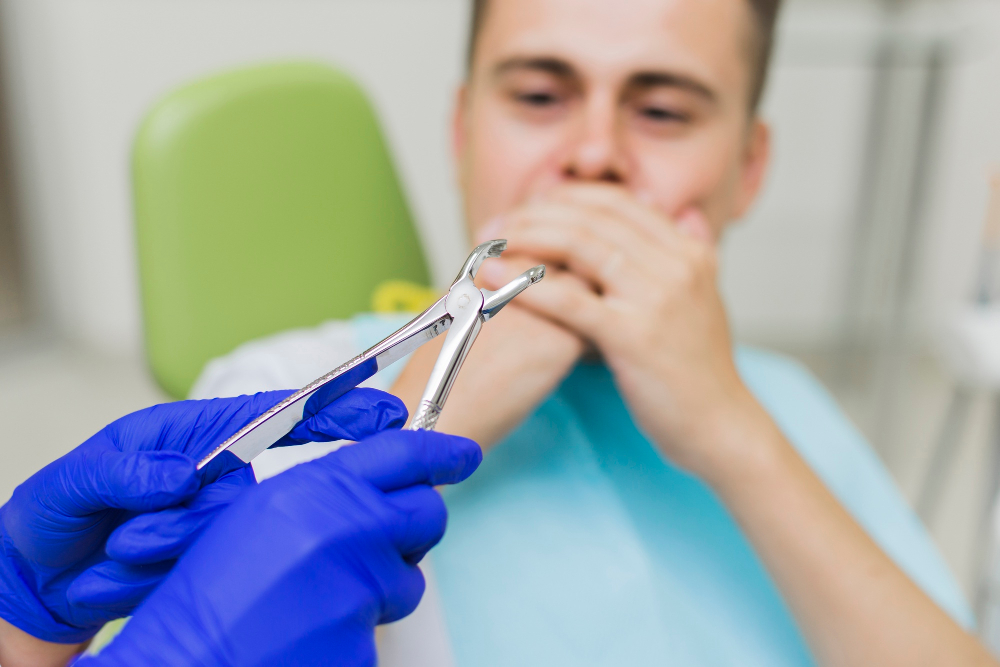If you are looking for a dentist for tooth extractions in Oshawa, you’re probably dealing with discomfort or a dental issue that needs attention.
Tooth removal isn’t something people look forward to, but it can be the best solution when a tooth is badly damaged, decayed, or causing other problems in your mouth. Whether you’re in pain, facing infection, or your dentist suggested pulling a tooth to make space for braces, understanding what to expect can help reduce stress.
When Do You Need a Tooth Removed?
There are many reasons someone might need a tooth taken out. Some of the most common include:
- Deep Decay: If a tooth is too damaged by cavities, it can’t be fixed with a filling or crown.
- Infection: If the inside of the tooth is infected and root canal treatment doesn’t help, removal is often the next step.
- Crowding: Dentists sometimes suggest removing a tooth to make room before starting orthodontic treatment.
- Gum Disease: Severe gum disease can weaken the support of the teeth, making removal necessary.
- Broken Teeth: A cracked or broken tooth that can’t be repaired may need to come out.
- Wisdom Teeth Problems: Impacted or painful wisdom teeth often cause swelling, infection, or push other teeth out of place.
How Dentists Remove Teeth
The dentist first checks your mouth and takes an X-ray. This helps them understand the tooth’s shape and position.
There are two main types of tooth removal:
1. Simple Extraction
This happens when the tooth is visible in your mouth. The dentist uses a tool to loosen the tooth and then gently pulls it out. You’ll feel pressure, but it shouldn’t hurt.
2. Surgical Extraction
This is needed if the tooth is under the gums, broken at the gumline, or impacted (like some wisdom teeth). The dentist may make a small cut in your gum and possibly remove a bit of bone to get the tooth out.
For both types, you’ll get local anesthesia so you won’t feel pain. Some people may need extra sedation if they are anxious or the process is more complex.
What Happens After the Tooth Is Removed?
Once the tooth is out, your body starts healing right away. The dentist places a gauze pad to stop bleeding and help form a blood clot. This clot is important. It protects the bone and nerves underneath and helps you heal properly.
Most people feel sore for a few days. Mild pain, swelling, or stiffness is normal. These tips help with recovery:
- Bite on the gauze pad for at least 30–45 minutes to help stop bleeding.
- Use ice packs on your cheek to help with swelling.
- Take the medicine your dentist gives you, especially if it’s for pain or to stop infection.
- Rest the first day. Avoid heavy lifting or bending over.
- Don’t use straws, smoke, or rinse your mouth too hard. This can cause the clot to move and lead to dry socket.
- Stick to soft foods like soup, yogurt, or mashed potatoes for a day or two.
Tips to Feel Better Faster
You want your mouth to heal quickly and without problems. Here’s what can help:
- Brush Carefully: Keep your mouth clean but don’t brush the area where the tooth was removed for a few days.
- Rinse Gently: After 24 hours, use a saltwater rinse (½ teaspoon salt in a glass of warm water) to clean your mouth.
- Drink Water: Stay hydrated but don’t drink anything hot right after the removal.
- Stick to Soft Foods: Foods like eggs, pasta, smoothies, and rice are easier to eat when your mouth is sore.
What About Wisdom Tooth Removal?
Many people need their wisdom teeth removed, especially if they don’t have enough room in their mouth or if the teeth are coming in at an angle. This can cause pain, swelling, and pressure on nearby teeth.
Removing wisdom teeth is a common and safe procedure. It’s usually done in the late teens or early twenties. Healing may take a few days longer than for other teeth, especially if the tooth was impacted.
Is Tooth Removal Painful?
Most people say they feel pressure but not pain during the removal. Afterward, you may have mild to moderate discomfort. Over-the-counter pain relief usually helps. If you follow your dentist’s advice and care for your mouth, the pain should go away in a few days.
If pain gets worse or doesn’t go away after three or four days, call your dentist. It might be a sign of dry socket or infection.
What Can You Do After Healing?
Once your mouth has healed, you might need to think about replacing the missing tooth. If the tooth was near the front or affects chewing, your dentist might suggest:
- Dental Implants
- Bridges
- Dentures
Replacing missing teeth helps keep your bite even and prevents other teeth from shifting. It also makes eating and speaking easier.
Common Questions
Q: Can I go back to work the same day?
A: If it was a simple extraction, maybe. But it’s better to rest at home for a day, especially after a surgical procedure.
Q: How long does healing take?
A: The gum will close in a few days, but full healing can take one to two weeks.
Q: Do I need antibiotics?
A: Not always. Your dentist will tell you if antibiotics are needed to prevent infection.
Say Goodbye to Tooth Pain
If you are considering tooth extractions in Oshawa, it helps to know what to expect and how to care for your mouth afterward. Whether it’s a wisdom tooth or another problem tooth, removing it can improve your oral health and comfort.
A trusted clinic like Groot Dental can guide you through the process and make sure you get the care you need from start to finish.
